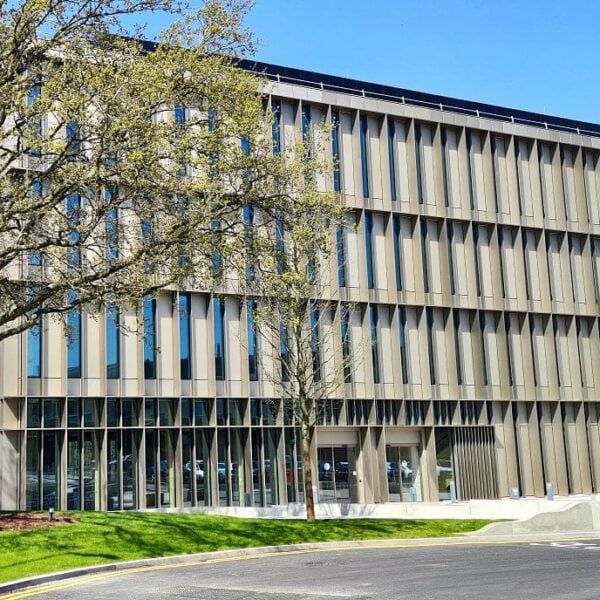Today, data centres and other IT systems of any size inevitably rely on UPSs to safeguard their data processing and communications hardware – and the UPS’s role is not only critical, but active all the time. While it must shield sensitive loads from hopefully rare complete power outages, it must also remove the many types of mains-borne electrical disturbances that can cause disruption or even serious damage whenever the mains is present.
In this article, Ian Jackson, General Manager at KOHLER Uninterruptible Power, a KOHLER company, looks at the threats that can arise, and the UPS’s role in countering them.
Most people are aware that data centres and other IT installations of any size depend on UPSs to safeguard their sensitive data processing and communications equipment. They may not realise, however, that UPSs exercise this protection continuously – not just on the hopefully rare occasions when a total blackout occurs. The utility mains can carry many types of electrical disturbance that may cause disruption and possibly serious damage to an IT operation at any time.
Susceptible equipment includes not just data processing and communications hardware, but also industrial process control systems, medical equipment, point of sale terminals, security and alarm systems and other industry-specific types. The disturbances that pose a threat to such hardware include:
- Power sags
- Brownouts
- Harmonics
- Power spikes and surges
- Noise and radio frequency interference
- Supply frequency changes
These are in addition to the possibility of a total blackout, and must be allowed for in any complete power protection strategy. Fig.1 summarises many of these disturbances in terms of their effect on the AC waveform.
Electrical disturbance scenarios
Spikes are short duration rapid positive or negative voltage transitions superimposed on the mains waveform, typically caused by thermostats or other devices switching heavy electrical currents, or by power companies’ load switching. However the most serious and dramatic spikes are caused by locally grounded lightning strikes, particularly when induced into telecommunications cables. Spikes will damage any sensitive electronics they reach, with serious corruption of software and data also likely.
Electrical noise can appear as either common-mode noise arising from disturbances between the supply line and ground, or normal-mode noise created by line-line or line-neutral disturbances. Normal-mode noise can be caused by lightning strikes, load switching, cable faults, or nearby radio-frequency equipment.
Electrical noise can cause computers to ‘hang’ and corrupt data; it can be minimised by fitting surge suppression filters to offending equipment and implementing proper cable screening and earthing arrangements.
A surge, when the mains voltage significantly exceeds its normal level for at least one cycle, typically occurs when a large load is switched off, or after sub-station load switching. Surges can degrade computers’ switched-mode power supplies, causing premature failure. Conversely, sags are drops in the mains supply that can last for several cycles. They are common occurrences, usually the result of switching on a large load or heavy rotating machinery. Sags can take voltages low enough to trigger automatic computer re-booting.
Non-linear loads that draw power from the mains in large peaks can cause harmonics. Computers, photocopiers, laser printers and variable-speed motors, or any loads containing controlled rectifiers, switched-mode power supplies or rotating machines are noted for generating harmonic interference. Harmonics disproportionately increase current and raise temperatures; this can lead to component failures and general equipment overheating.
Brownouts are identical to sags but have a much longer duration and are generally more serious. They occur when the utility mains supply cannot cope with current demand, and the generating company reduces the network voltage. Brownouts can last for several hours under extreme circumstances.
As mentioned earlier, blackouts – where the mains supply fails totally – are a hopefully rare but ever-present possibility. They have an obvious, sometimes devastating effect on any equipment not protected by a UPS with viable battery autonomy.
Power protection solutions
Some computer equipment has an in-built capability to ride through short-term power loss or reduction. The shorter the duration, the greater the excursion that can be tolerated. Computers may store sufficient latent energy within their power supply reservoir capacitors to maintain essential DC levels during line voltage sags and interruptions of up to ½ cycle (10ms), although not all will have this level of ride-through capability.
A UPS is the only way of ensuring power that is not only continuous, but also sufficiently clean and closely-toleranced for sensitive loads. While on-line double-conversion type UPSs closely control power quality by using inverter-generated output, supplementary equipment can be used to address further issues; radio-frequency interference and noise spikes can be substantially reduced by fitting suitable filters and some form of isolation transformer in the supply line. Surges can also be reduced using externally connected components.
Well-resourced UPS suppliers such as KOHLER Uninterruptible Power, a KOHLER company can offer site surveys and advise on suitable power protection strategies.





